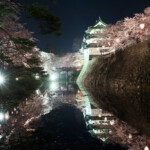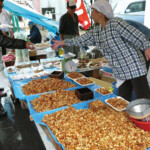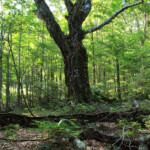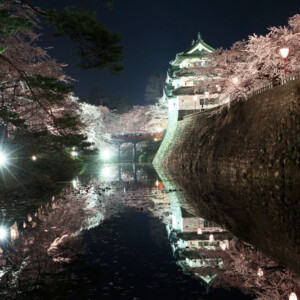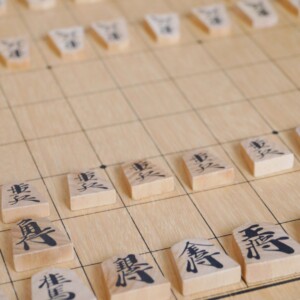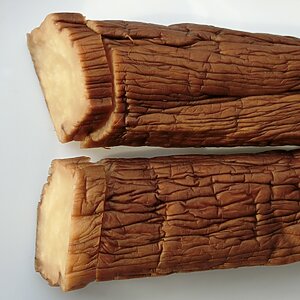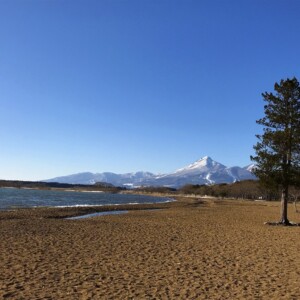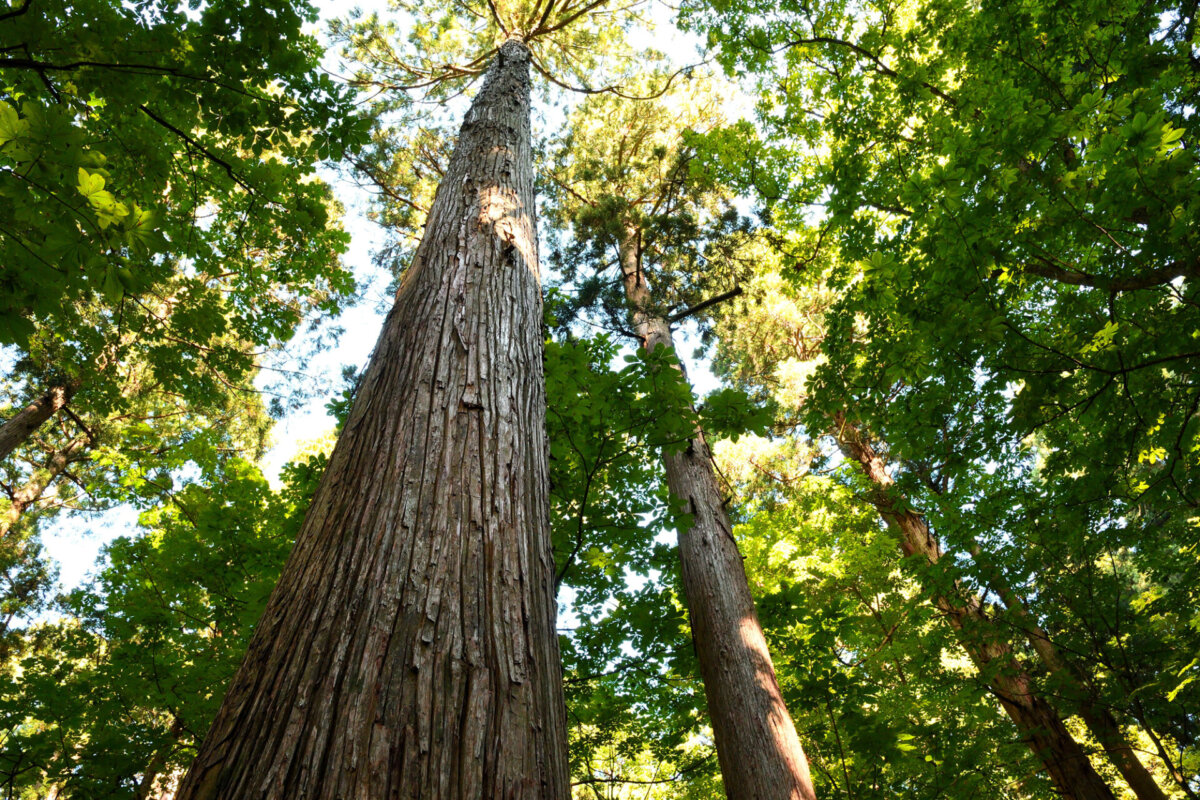
Akita Cedar, which has been close to people's lives since ancient times, is a close look at the reasons and secrets [Akita Prefecture]
table of contents
- 1 Cedar is a tree endemic to Japan
- 2 Cedar has been used in many ways since ancient times as a useful tree
- 3 Akita cedar fences and pillars were discovered in the ruins of the building in Akita Prefecture.
- 4 Toyotomi Hideyoshi uses Akita cedar at the construction of Fushimi Castle
- 5 The Satake Kubota Domain focuses on Akita Cedar as a source of income for the domain.
- 6 During the mid-Edo period, the natural cedar forests were devastated due to excessive logging.
- 7 Satake Yoshikazu, the 9th lord of the Kubota domain, saved Akita Cedar
- 8 Satake Yoshikazu founded the domain school Meitokukan and asked Sugae Masumi to compile the "Sugae Masumi Journey."
- 9 The demand for Akita cedars continues to be high even after the Meiji period, and reckless logging continues.
- 10 At the end of the 20th century, the country finally began to take action to protect Akita cedars.
- 11 Nice news. New cedar species with less than half of pollen is developed in Akita Prefecture
Japan's forest area is as much as 67% of the country's land area. Akita Prefecture has a forest rate that is above the average of 72%, and the broad-leaved forests, mainly beech-based beech forests in the World Heritage Site Shiragami Mountains (Shiragami Sanchi/Akita Prefecture/Aomori Prefecture), and Akita cedars , are well known.
Cedar is a tree endemic to Japan
Cedar (cedar) is a tree that you can see in many places, from southern Hokkaido to Yakushima (Kagoshima Prefecture). By the way, did you know that cedar is a tree unique to Japan? It is classified into the genus Cedar in the subfamily of Cedar family, and the genus is the only cedar in Japan (endenzyme).
Huh? Some people may think so. The "Himalis cedar" and "Lebanon cedar" are known as familiar cedar trees. However, these trees resemble cedars, so they were simply named XX cedar in Japan, and are actually plants of the Pineaceae family.
There is a cedar forest in China and is used for building materials. However, this cedar was brought from Japan hundreds of years ago and was a very useful tree, so it has become widely cultivated. Nowadays, there are some areas with a wide range of forests that look like they are native to the forest, but they are all artificial and not even a single natural cedar tree.
Cedar has been used in many ways since ancient times as a useful tree
I wonder when cedars have been growing. What is currently known is a fossil found in Akita, Iwate, Yamagata prefectures and other prefectures from 5.3 million years ago (late midneoplastic period) and is thought to have been around for some time. However, the Japanese archipelago was separated from the continent about 20 million years ago, so this plant was not the same as that of a period when it was connected to the continent before that.
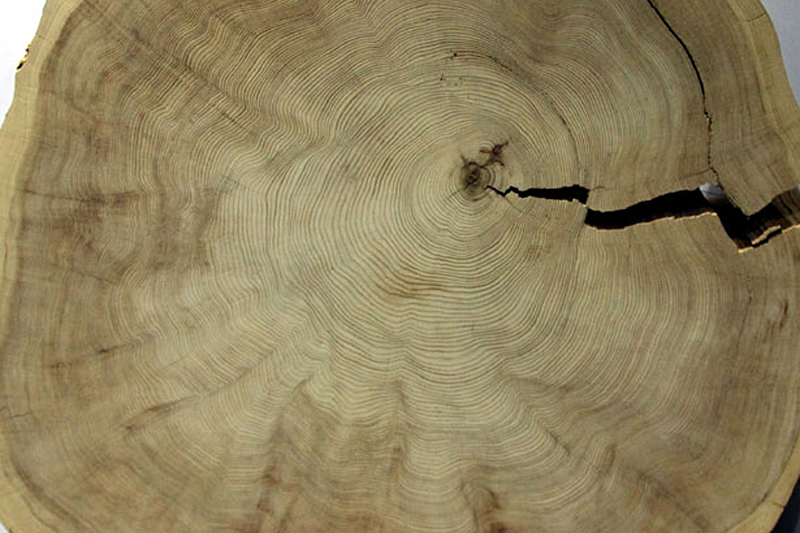
Cedar is soft and easy to process, light weight and easy to handle, durable, resistant to moisture and corrosion, and is also well-strength, has natural insect-proof and antiseptic properties, and is resistant to insects, which are highly relaxing, with beautiful wood grain and scent, and has excellent moisture control and maintains moderate humidity inside the room. For this reason, it has been used for building materials, furniture, shelves (fences), tableware, barrels, etc. since ancient times.
Akita cedar fences and pillars were discovered in the ruins of the building in Akita Prefecture.
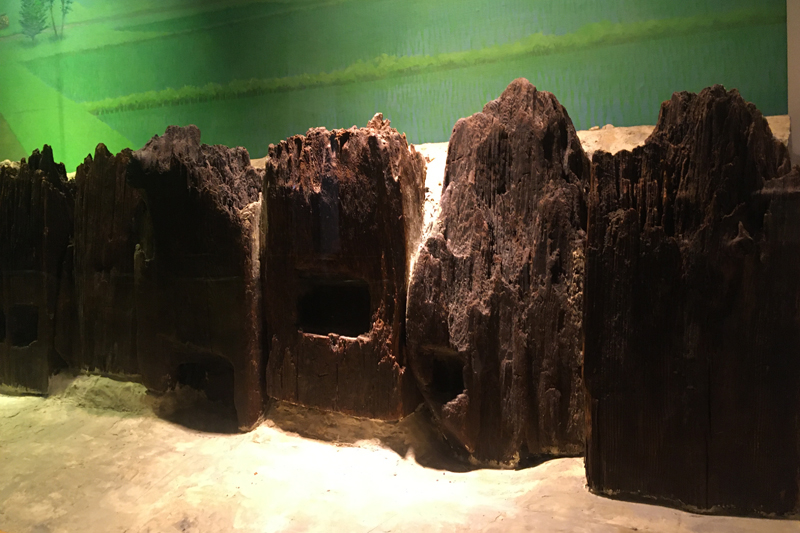
In Akita Prefecture, around 850 (early Heian period), square cedar timber used for the outer fence was excavated from the site of the front line fortress of Futa Fence (Hotanasaku/Sembokucho, Daisen City/National historic site), which was the Yamato Imperial Court's invasion of Emishi, which was an indigenous in the Tohoku region.
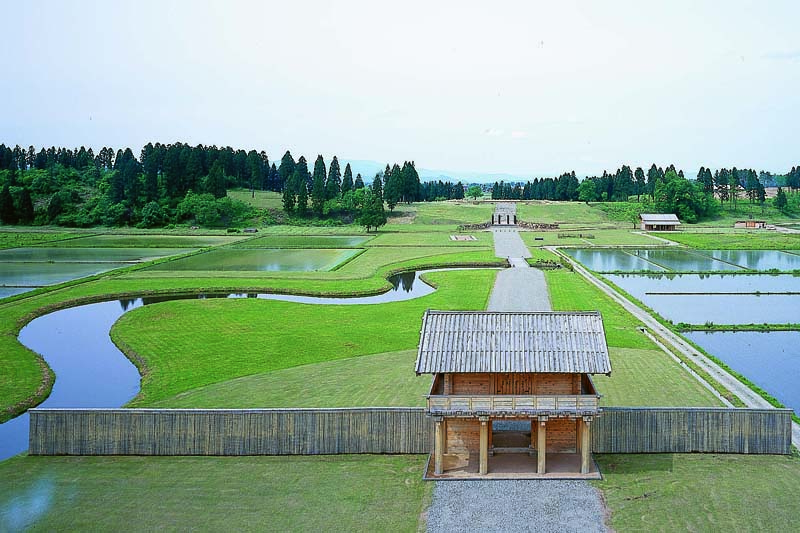
Futa fence ruins <Information>
- Facility name: Futa fence ruins
- Location: 95 Futanakayachi, Daisen City, Akita Prefecture
- Phone number: 0187-63-8972 (Cultural Properties Division, Tourism and Culture and Sports Department, Daisen City)
- Publication period: late April to mid-November
- Closed: Obon period, mid-November to late April
- Opening hours: 9:00-16:00 (last entry 15:30)
- Admission fee: Free
- URL: Futa fence ruins
- access
- Public Transportation: From Akita Shinkansen, JR Ou Main Line, JR Tazawako Line Omagari Station, take a bus to get off at the Buried Cultural Center bus stop, or take a taxi to about 15 minutes.
- Car/Approximately 20 minutes from Omagari IC on the Akita Expressway
Google Map
Cedar pillars and boards have also been found at the remains of a building from the mid-Heian period (Kurumida Teiseki/Kita Akita City).
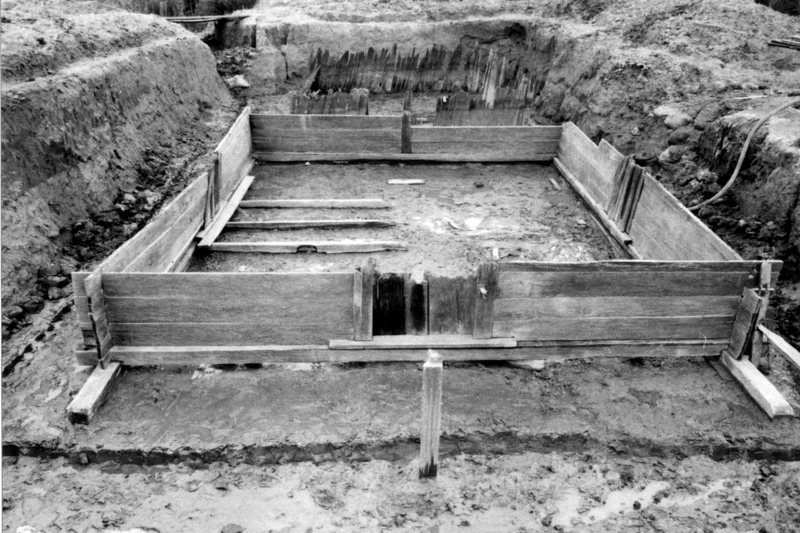
The Kurumikan Ruins were discovered by chance during the construction of the Takasu Junior High School (Kita Akita City) grounds in 1961 (Showa 36), and subsequent investigations revealed that it was a building buried in a mudslide caused by the eruption of Lake Towada volcano, which was said to have occurred in 915. The roof of the building was washed away by a mudslide, but the part below the roof was miraculously still in its original state. The Kurumikan Ruins are historic sites in Kitaakita City, and many of the excavated items, including cedar wood, have been designated as national Important Cultural Properties. The ruins have been rebuilt for protection, and the storage of excavated items is not open to the public, so you cannot visit them.
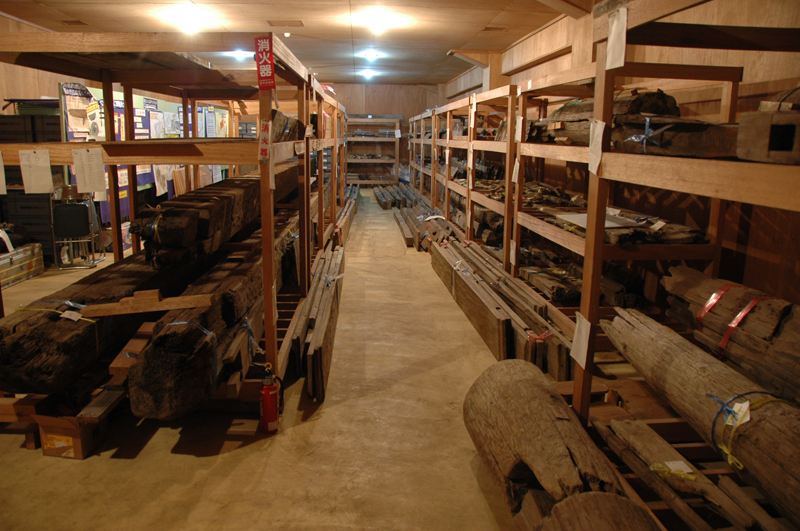
Kurumikan Ruins <Information>
- Facility name: Kurumikan Ruins (non-public)
- Location: 1 Bozawa Ueno, Kitaakita City, Akita Prefecture
- Phone number: 0186-62-6618 (Kita Akita City Board of Education Secretariat, Lifelong Learning Division)
- URL: Kurumikan Ruins
- access
- Public Transportation: Approximately 15 minutes on foot from Takanosu Station on the JR Ou Main Line or Takanosu Station on the Akita Uchiriku Longitudinal Railway, 6 minutes by taxi, or 15 minutes by car from Odate Noshiro Airport
- Car/Approximately 15 minutes from Odate Noshiro Airport IC on the Akita Expressway
Google Map
Toyotomi Hideyoshi uses Akita cedar at the construction of Fushimi Castle
It is said that Toyotomi Hideyoshi was the one who used Akita cedar outside the Akita area and made it famous. When Hideyoshi built Fushimi Castle, he instructed him to find the right wood for the castle. My favorite thing about that was Akita Cedar. He immediately ordered the Akita clan, a powerful clan that controlled the northern part of Ugo Province (Akita Prefecture and Yamagata Prefecture) at the time (almost Akita Prefecture), and instructed them to send Akita cedars to Kyoto.
Akita cedars, which grew wild in the area along the Yoneshiro River, were cut down using axes and saws, and then collected them in Noshiro Port using the river. From Noshiro Port, the Sea of Japan was transported by a large ship to Tsuruga (Fukui Prefecture), and from Tsuruga it was delivered to Kyoto using land transport and Lake Biwa's shipping.
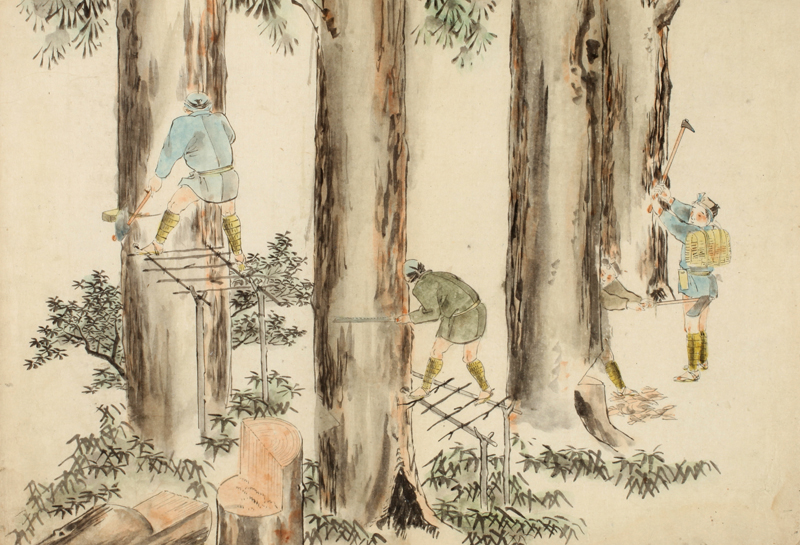
The Satake Kubota Domain focuses on Akita Cedar as a source of income for the domain.
In the Edo period, the Satake clan became the domain lord of the Akita region. The first lord of the feudal domain, Satake Yoshinobu (1570-1633), first took a look at Akita Cedar, which had become popular in the Kyoto area. There are also records that in 1604, Akita cedar began selling to other domains.
Yoshinobu's senior member Shibue Masamitsu (1574-1614)'s thought that "the national treasure is a mountain, and the decline of the mountain is the decline of the country." Yoshinobu followed Masamitsu's teachings and also put a lot of effort into protecting forest resources while logging.
During the mid-Edo period, the natural cedar forests were devastated due to excessive logging.
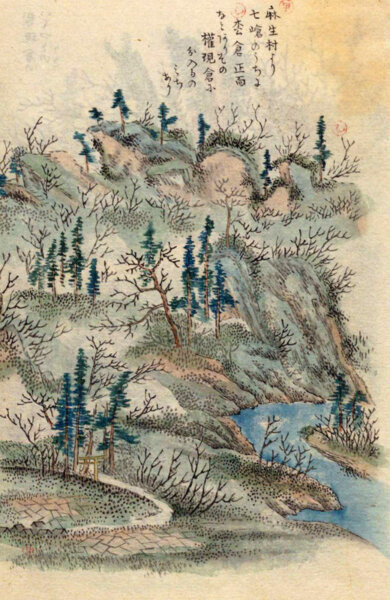
Manuscript of the National Archives
After that, with the prosperity of the Edo Shogunate, Akita cedar became extremely popular in Edo, and cutting down the cedar became a priority in order to keep up with the demand. The Akita Domain's finances were wealthy, but as a result, the population of the domain continued to increase, and consumption within the domain, including houses, firewood and charcoal, increased. Therefore, in the late 1600s, most natural cedars in places where humans could enter were cut off, and fewer products were sold.
As the Kubota Domain's revenue from the wood decreases, it will focus on developing mines such as silver, copper, and lead that are located deep in the Yoneshiro River tributaries. Products from Ani Mine (Kita Akita City) and Tara Mine (Daira Kozan/Fujisato Town) have contributed greatly to the feudal finances. However, as the mine construction involves the consumption of large amounts of wood for frames and firepower, forest devastation continues to reach its limit.
Given a sense of crisis, the Kubota Domain proposed a policy to protect and nurture forests, but it took decades for cedars to grow and it had no immediate effect. For Akita Cedar, the dark age continued until the late 1700s.
Satake Yoshikazu, the 9th lord of the Kubota domain, saved Akita Cedar
In 1785, the 8th lord of the domain, Satake Yoshitsune (1748-1785), died suddenly, and his successor was Yoshikazu Satake (1775-1815), who was only 11 years old at the time. After witnessing the devastation of Akita cedars, he investigated the cause of the rough forests and explained the need for planting the trees, saying that even if it was not in his own time, he would definitely become a national treasure in the future. First, they created a forest ledger and grasped the logging situation, and decided to return 70% of the profits of cedars that they had planted to the residents (until then, the residents and the feudal domain would split half of the profits they had made) (cultural reform).
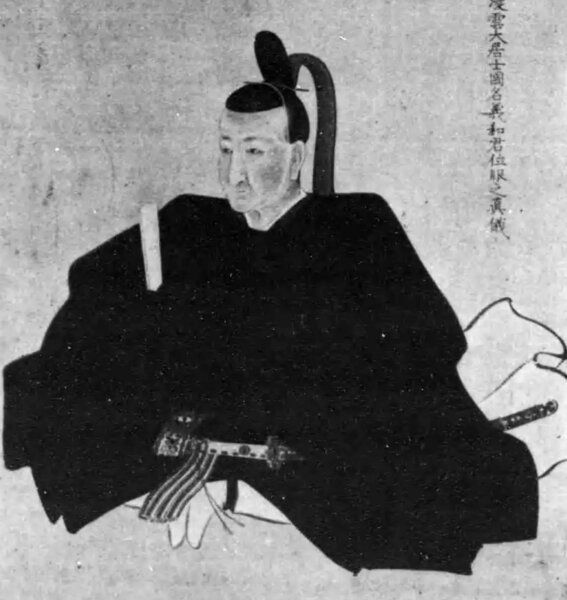
: National Diet Library
Yoshikazu's retainers, Kato Keirin (1768-1834), demonstrated great power in this forest reform. Ginglin went deep into the mountains where officials normally wouldn't step in, and looked around the mountains within the domain. Based on this experience, they proposed reform plans, and the number of cedar trees they planted has reached 2.5 million. is known as father of Akita Cedar as the person who established the foundation of Akita Birin
Satake Yoshikazu founded the domain school Meitokukan and asked Sugae Masumi to compile the "Sugae Masumi Journey."
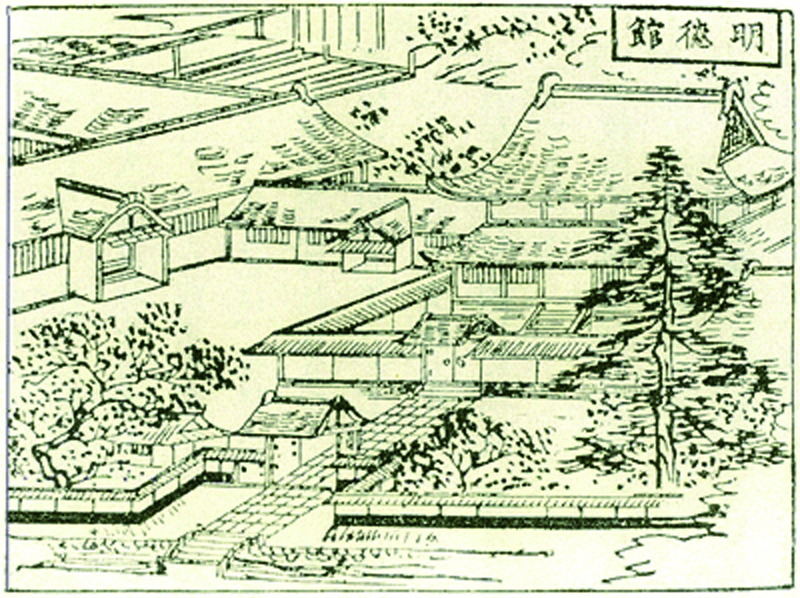
Yoshikazu became the lord of the feudal domain at the age of 11 and passed away at the age of 41, but during that time he also devoted himself to his studies. He founded the feudal school Meitokukan, and produced many talented people, focusing on education that values individuality. He also met local historian Sugae Masumi (1754-1829) in person and asked him to compile a magazine for the Kubota Domain territory (6 Dewa counties), and later paid off as Sukae Masumi Journey The Sugae Masumi Journey was preserved since then in Meitokukan, and the coloured illustrations depicting the scenery, customs and events of the time have become a very valuable resource for us to learn about the Edo period. The Sugae Masumi Journey is a nationally designated important cultural property.
The demand for Akita cedars continues to be high even after the Meiji period, and reckless logging continues.
Akita cedars were desperately maintained and revived by the feudal lords, with Yoshikazu in the lead up to Yoshikazu, but after the Meiji Restoration, most of them became national forests and were managed by the government. The demand for Akita cedars continued even after the Meiji period, and in particular, the Sino-Japanese War (1894-1985), the Russo-Japanese War (1904-1905), and World War I (1914-1918), Japan's modernization progressed rapidly, and large-scale logging continued, mainly in artificial forests that had been planted and grown beautifully during the Edo period.
In 1945, a major air raid by the United States and centrally, many major cities became burnt-out fields, and after the war ended, they were busy reconstruction. Demand for wood peaks, and not only natural cedars of Akita cedar are cut down, but even forests that have been protected as a safety forest are also cut down. Cedar planting was carried out on the site again, creating a large-scale artificial cedar forest.
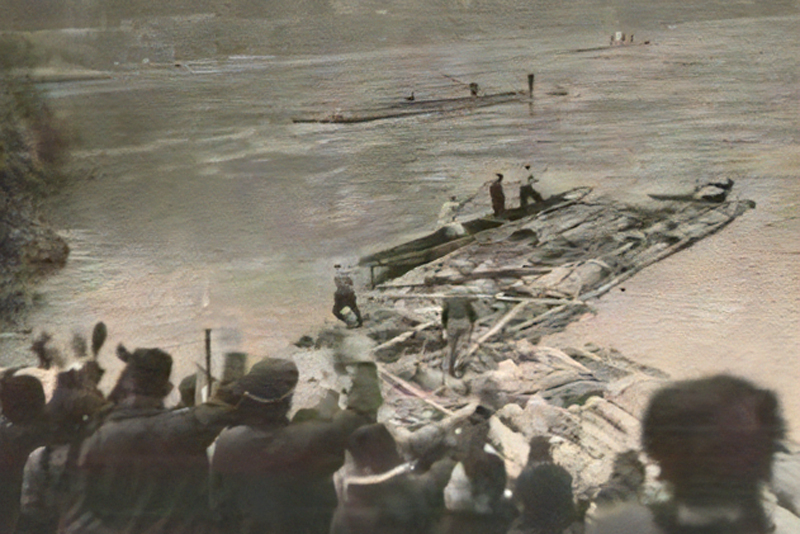
At the end of the 20th century, the country finally began to take action to protect Akita cedars.
Determining that demand for timber will last for 40 to 50 years, the government will plant fast-growing cedar planting in forests across the country. At this time, the broad-leaved trees were also cut down to a forest of mixed trees, including oak and oak, due to the slow growth of the broad-leaved trees, and transformed into cedar forests. However, this was good when demand for domestically produced wood was high, but in the 1990s, import liberalization of wood was implemented, and demand for cedar decreased. Furthermore, prices will plummet and worst. As a result, the number of people involved in forestry has decreased dramatically, and many cedar forests, which have grown to great extent 40 years since planting, have been left untreated and left untreated (this is what leads to the current hay fever).
Despite this, the demand for Akita cedars was still high compared to other countries, and natural cedars in particular were especially prioritized as commercial products. In 1997, the government finally realized that this was a problem, and began to protect the natural cedar. First, we canceled the natural cedar cutting plan and moved to a management that prioritizes protection. Currently, as a general rule, the cutting of natural cedars is prohibited, and only artificial forests planted before the Meiji period are distributed, with the distribution of only 80 to 100 years of age.
Nice news. New cedar species with less than half of pollen is developed in Akita Prefecture
Meanwhile, research into cedar that does not produce pollen is also beginning to progress.
In 2019, two new varieties were developed in Akita Prefecture with less than half of the amount of pollen scattering. The company was developed by the Akita Prefectural Forestry Research and Training Center Resource Usage Department, and the seeds will begin selling in 2025 (Reiwa 7).
The Tohoku Forest Management Bureau is also working to plant cedars that are low in pollen, and research is also being conducted on cedars that are free of pollen. In a few decades, we may come to a time when we will not suffer from hay fever from cedars.
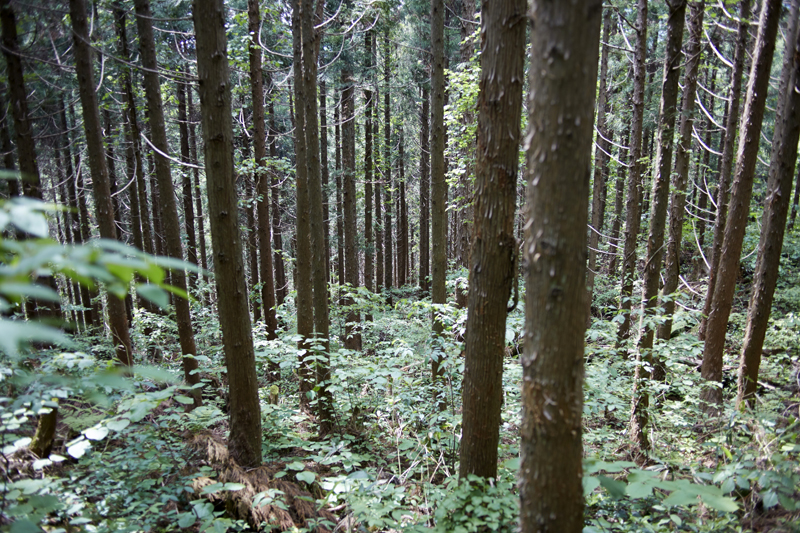


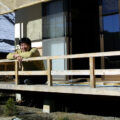



![Why are there no virgin beech forests larger than the Shirakami-Sanchi in the world anymore? [Fujisato Town, Aomori Prefecture] Shirakami Mountains, Mount Iwaki in the distance](https://jp.neft.asia/wp-content/uploads/2025/09/0d3ff92f34c42ae905cbae977b5345c3-150x150.jpg)
![[Aomori Prefecture] There are two world heritage sites in Tohoku! What is the appeal of Japan's first World Heritage Site, Shirakami-Sanchi? 4838987_m](https://jp.neft.asia/wp-content/uploads/2021/12/4838987_m-150x150.jpg)
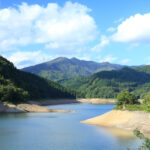
![[JR East Pass Trip: Part 2 of Day 1] Strolling around Akita City on the first day, delicious local sake and local cuisine! Giant Akita dog at Akita Station](https://jp.neft.asia/wp-content/uploads/2022/11/IMG_3762-1200x675-1-150x150.jpg)

